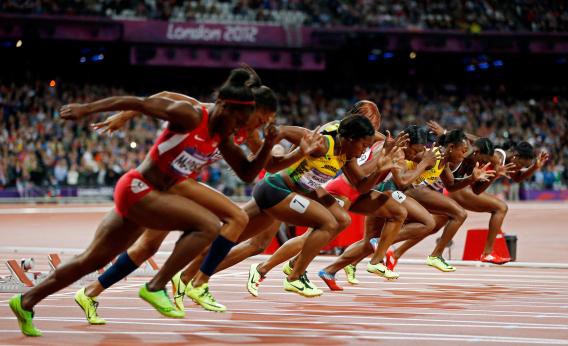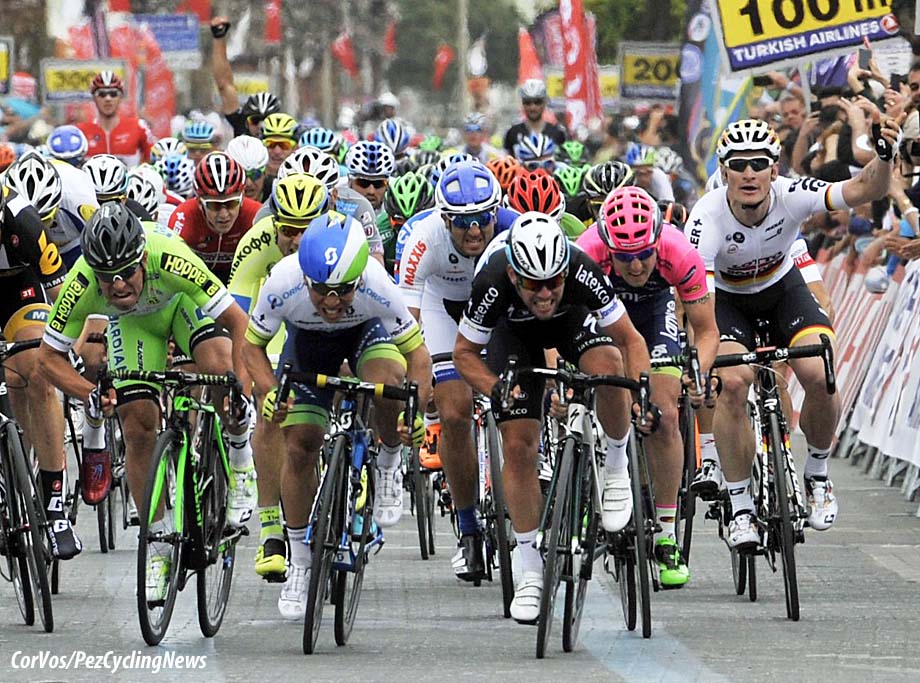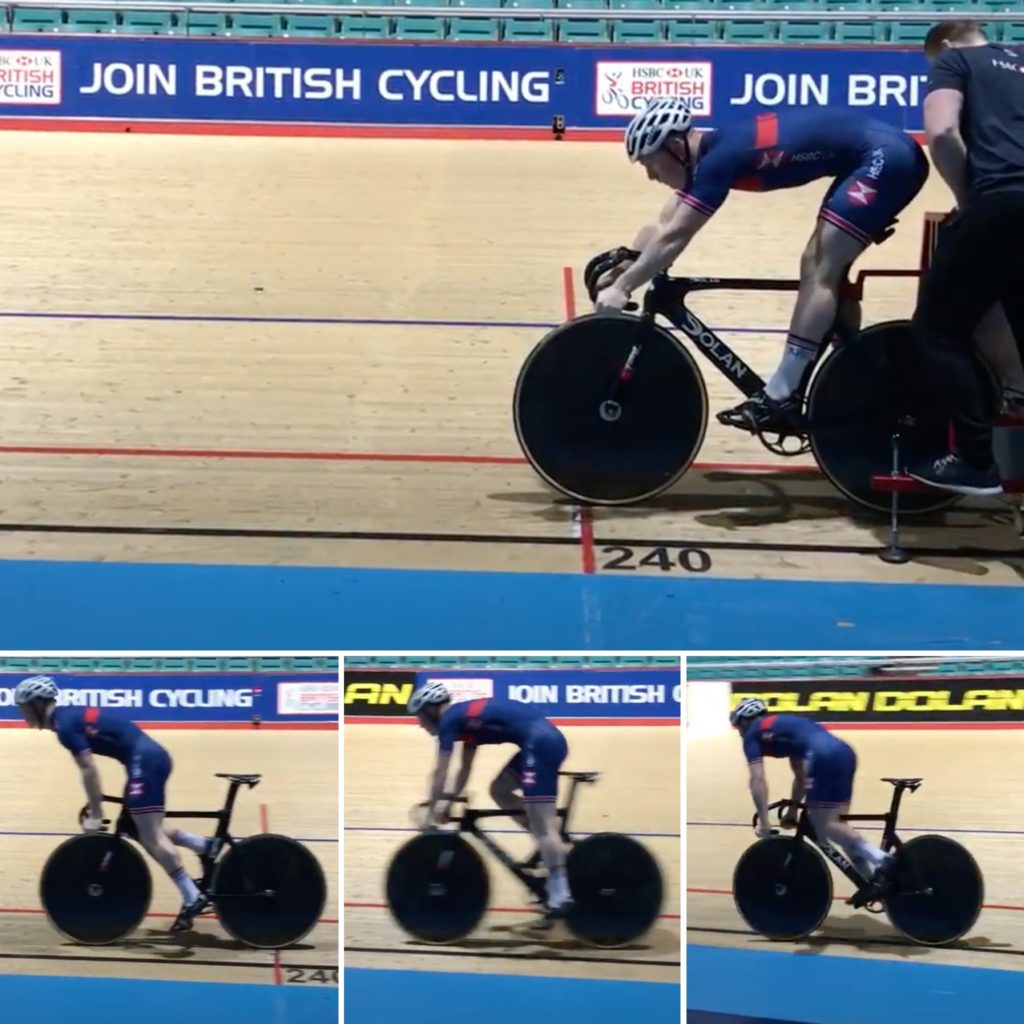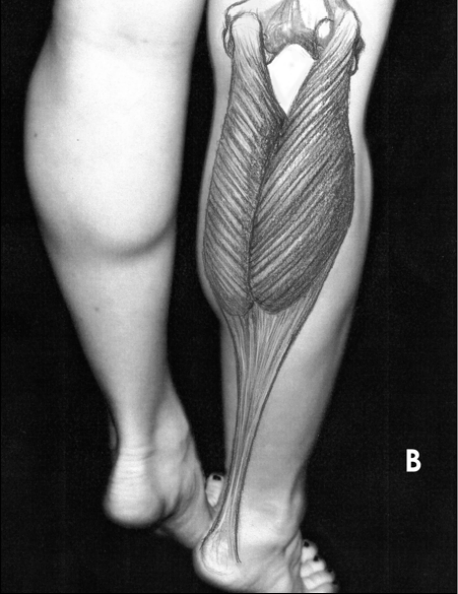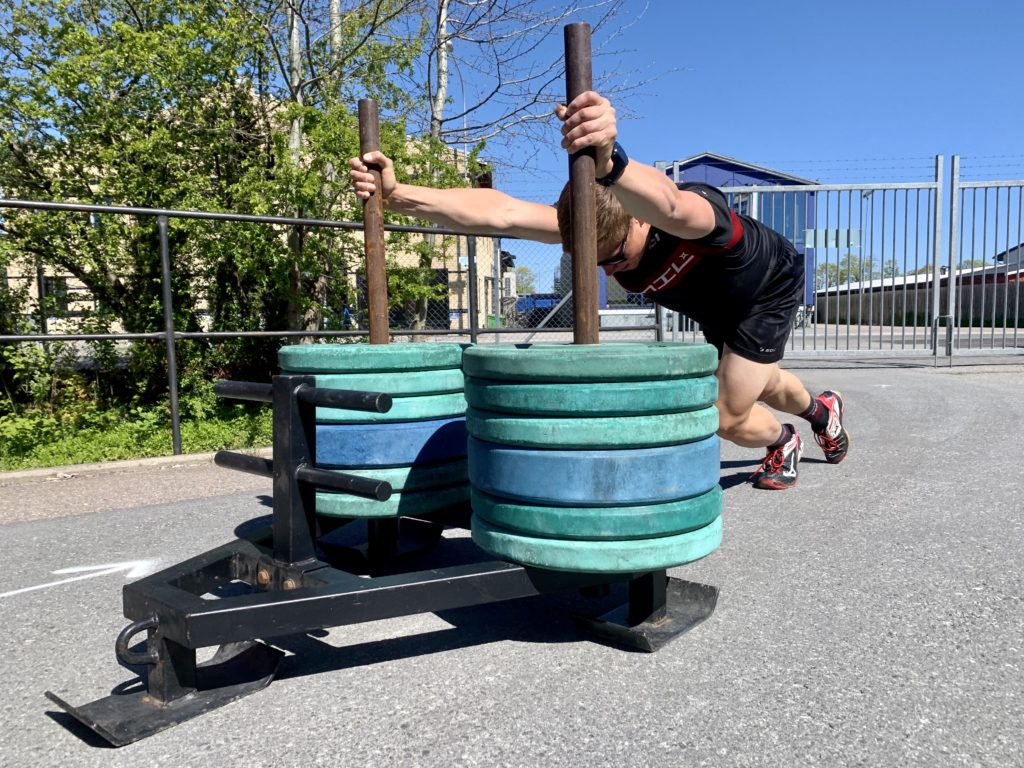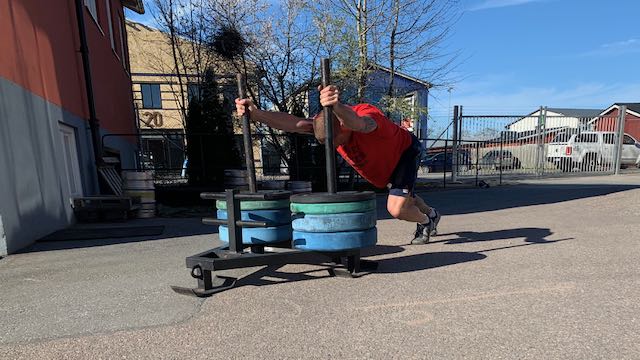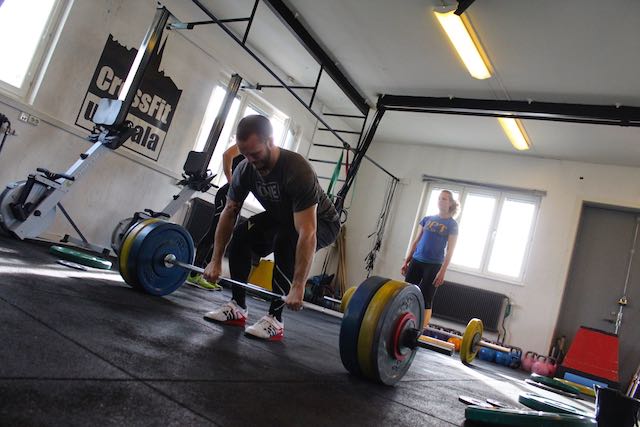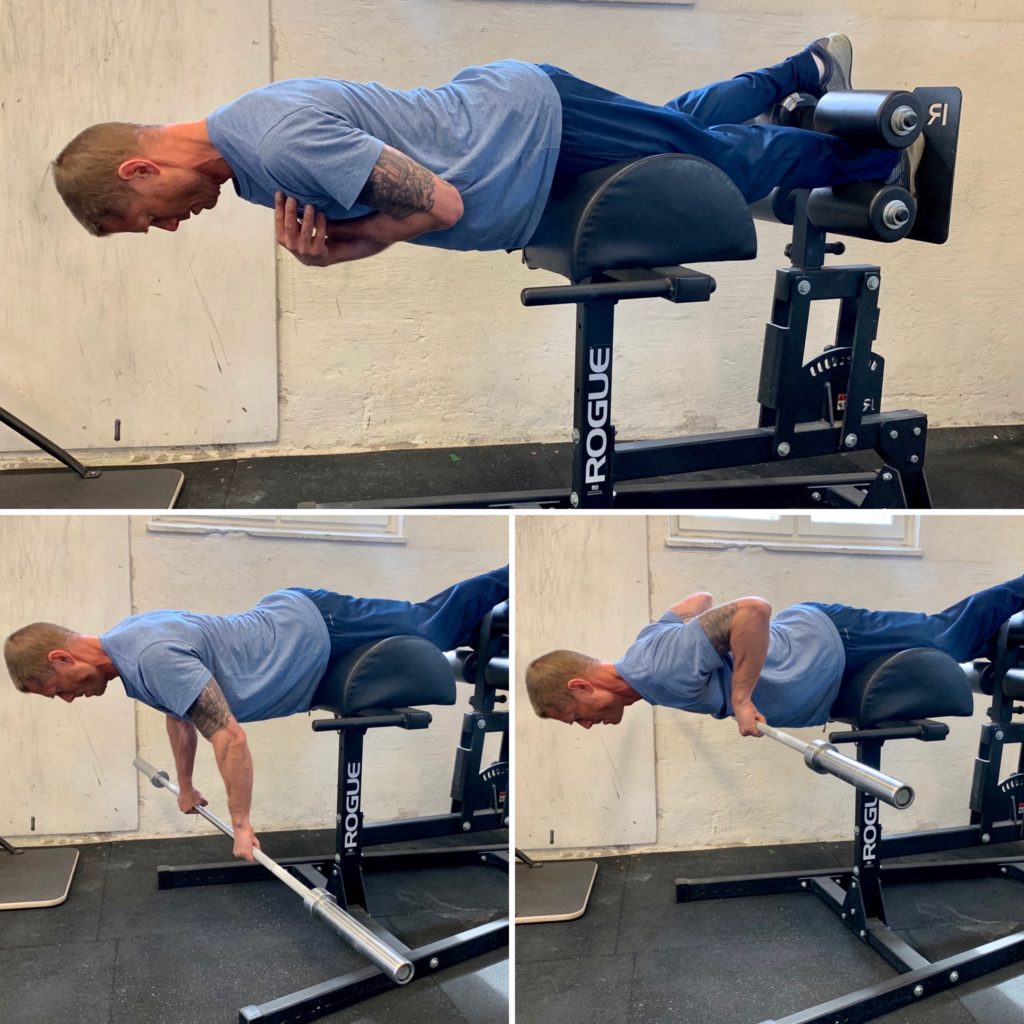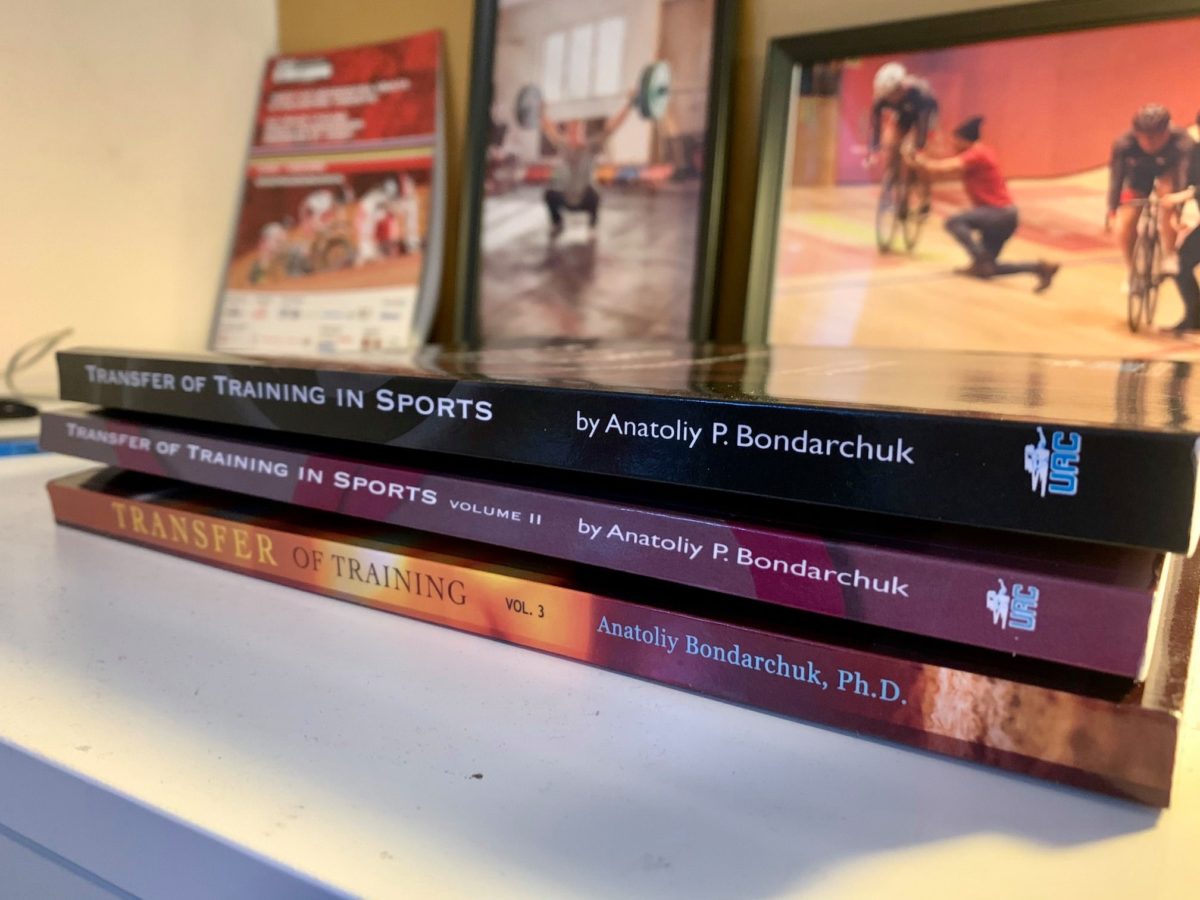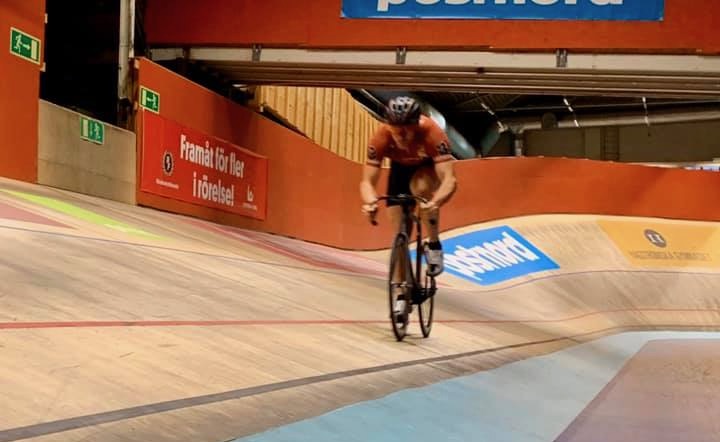Simplicity is the ultimate sophistication.
Leonardo da Vinci
In the first article of this series I explored the risks of assuming that there is something fundamental beneath the surface, which must first be optimized in order to increase performance later on. In the second article I challenged the need to continually increase physical training load, suggesting to focus instead on adaptation of task difficulty to where our athletes are exactly now.
In this last article of the series we will continue to explore methods to stay in the present, and how the use of our language can help but also overthrow our attention to what is really going on and hinder the transfer of the exercises we prescribe.
As we have seen, the promise of the ideal is repeated over and over again but never fulfilled. When technology was invented to measure oxygen consumption, blood lactate concentrations and force it gave rise to new models for training. Now the recent ability to sequence DNA is looking to change the way we measure and prescribe training.
While this way of looking at the internal processes of the body certainly has merits to many sciences, it is still not able to add much to the decision process constructing training programs. Just like with the preceding reductionist approaches comes the same possible pitfalls.
We could also measure the length of fascicles, concentrations or flux of chemicals, energy storage or the efficiency of the electron transport chain and… Well, it’s likely to be a mess to bring all those parts together in a general capacity. The whole is not the sum of its parts, despite how magnified they may be.
The aspects of things that are most important to us are hidden not because of their depth, but because of their simplicity and familiarity.

The philosopher Ludwig Wittgenstein once described the situation as it is as if a man is standing in a room facing a wall on which are painted a number of dummy doors. Wanting to get out, he would fumblingly try to open them, vainly trying them all, one after the other, over and over again. But, of course, it is quite useless. All the time, although he doesn’t realize it, there is a real door in the wall behind his back, and all he has to do is to turn around and open it.
Having explanatory models of how it all works, seems to be helping us to take the right actions. But the problem with the concept creation is that it assumes that by creating concepts, we can lay down in advance what it is we are thinking about. In plain English, there is really not much evidence supporting the theoretical concepts of phase potentiation, but we have a hard time to see this since it is all we know.
To help our man get out of the room all we have to do is make him look in a different direction. To do this we should turn things around, away from the safety of dogma, and look at what is hidden in plain sight.When do our athletes struggle in racing or during competition? Describe those situations without explaining why they happen.

This brings us to the topic of terminology, on how to best communicate with the people we coach.
Concept language is used to describe words or constructs that bundle a lot of actions and interactions under a simple word. To transmit less detail and more fundamental aspects of information faster and easier, mainly by experts of a defined field.
Complementary training, meaning all training carried out away from the field of the game, with the intention of helping successful execution of skills in the game itself (or a more functional life for that matter).
Coaches, specifically us who provide help with complementary training, are usually using the concept language of our field, as opposed to the language of the game itself. We use constructs that are natural in the gym, like “strength”, “strength endurance” and “speed”. We speak a language of “intensity”, “volume”, “sets” and “reps” with the athletes that we train.
When athletes are new to complementary training they usually struggle. They have a hard time to understand our lingo and to perform the training we prescribe with it. When we invite athletes into this world, filled with new mysteries to solve, they will eventually get better and better at speaking our language and doing our type of training.
But this was never the end goal.
It is not enough to show how clever we are by showing how obscure everything is
J.L. Austin
There is some evidence that memories are stored in the same brain regions as they are perceived. This means that not only what you mean when you phrase your coaching cues matter, but also how the athlete interprets them and in what context the training is carried out for their subsequent retrieval.
The way language seems to provide a gateway into athletes’ motor cortex is quite stunning. Studies show that when participants hear verbs like lick, pick and kick it activates the respective brain regions of the tongue, arms or legs.
By using language so different from the field of play, we might accidentally be creating a rift between the athletes training and the application of it. By using our concepts instead of mapping into the common language that is better understood by our trainees we are limiting the transferability of the training they do .
Sports is a practical matter. It is not about words, but rather about actions. Action language, on the contrary from concept language, is the language used to describe only relevant details in a clear, concise and objective way, transferring details without judgement, often with a more direct purpose. It tells what to do in a specific situation of a game.
When we start with what we see, rather than from physiological constructs, we are more likely to be able to create terminology that ties the action language of the sport and concepts of exercise science together. Then we can utilize this terminology in a coaching process that is individualized without becoming abstract.
The athletes will perform their exercises more purposeful and they will intuitively know how to use the skills they are strengthening. And, although they might not be well versed in your world, they often are very knowledgeable of their sport. They know themselves and they will be able to help improve those exercises in a constructive way.
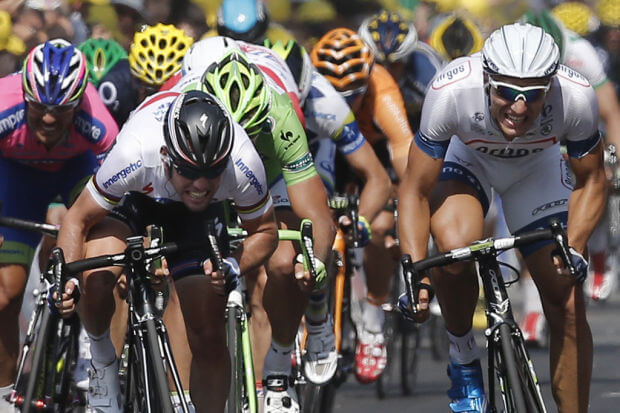
A muscle fiber generates tension through cross-bridges of actin and myosin. Under tension, the muscle can be made to lengthen, shorten, or remain the same. Muscles also have elastic properties where energy can be stored to increase force, but only for a very short time. When a muscle is not tense it is “slack”. To produce movement, that slack has to be removed by pretensioning.
At high speed and high power the demands for contraction velocity, pretensioning and efficiency of storage, and return of energy are greatly increased. As a result there is little positive transfer between different types of muscle contraction. In cycling most muscle actions are shortening contractions.
Cyclists produce higher peak pedal power and rate of force development on a stable cycle, commonly referenced to as an ergometer (like a watt bike, a spinning bike or a trainer) than when riding in a velodrome.
When sprinting on the ergometer, the riders only have to focus on producing maximum power, whereas on a bicycle they also have to control the direction and stability whilst trying to produce maximal power. Also, one of the biggest factor to overcome during cycling in aerodynamic drag which is not easily simulated in a gym.
Because of different demands there is an altered riding position observable as difference in hip, knee and ankle angles.
With the principle of specificity in mind there would seem to be arguments for the the track cyclist to train on the track, or to find other ways to challenge stability if that is not possible.
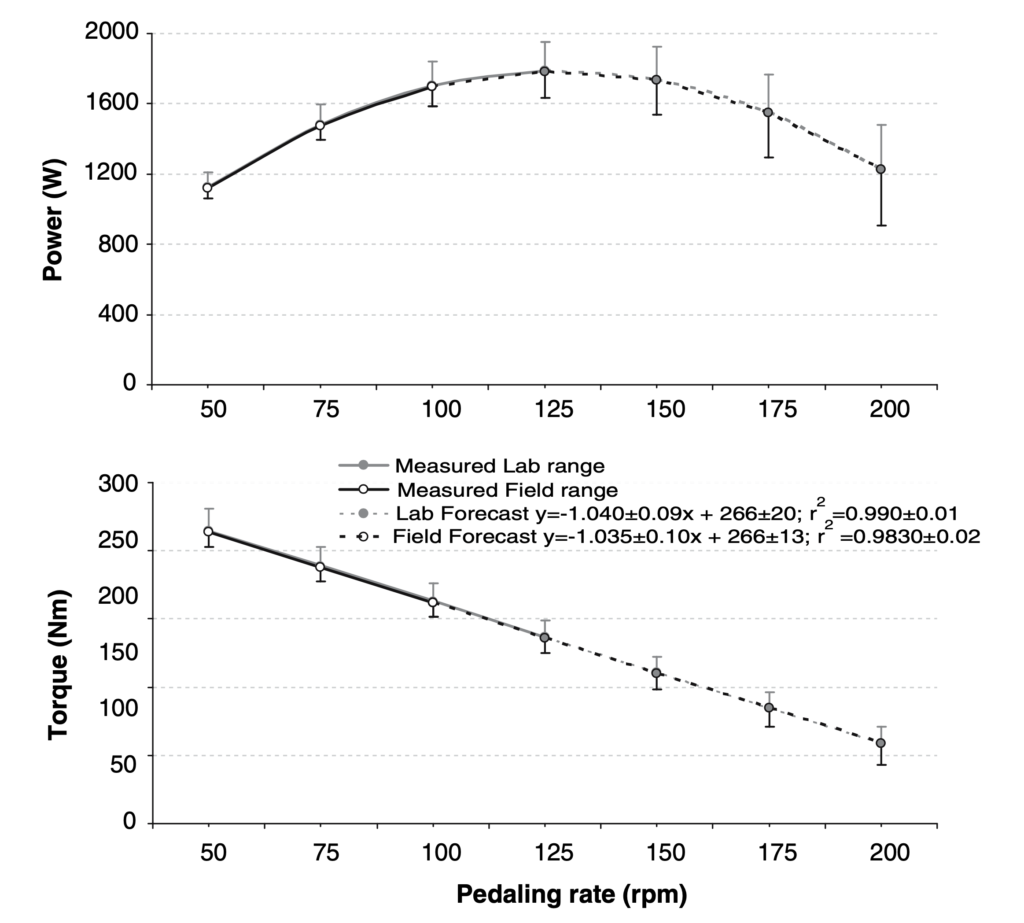
Cadence, or pedaling rate, is an important factor influencing the economy of motion, power output and the development of fatigue during cycling. In track sprinting the use of fixed gearing makes this a very important consideration at race day, but also to guide training. The inability to select the best gear for specific situations during a race, forces a decision on which gear would be overall most suitable for a rider in all situations. Some factors influencing this are the type of race, the opponent and the rider himself.
Bigger gears give the opportunity for higher maximum speed with less fatigue. If one is able to get up to speed and then to effectively spin it around, that is. With higher inertia comes higher demands of force.
There has been considerable research in what is called optimal cadence, the cadence where peak power is achieved. Given the importance of contraction velocity and efficiency in high speed and high power movement it is thought to provide important insight in the selection of pedaling rate, and therefore appropriate gearing.
Optimal cadence is highly correlated with the amount of fast-twitch muscle fibers, and in a sport where the ability to push bigger gears are so rewarded as it is in track cycling, there is likely not much drawback in continually training to increase their proportion. Given the low risk of gaining mass when doing large volumes of training, there is little reason for the road sprint cyclist to think differently.
As with other constructs there is a catch to letting peak power testing dictate training decisions. Those tests are almost always carried out with very little pre fatigue and from a stand still or low cadence. Following periods of exertion cadence at peak power has been shown to change. Higher velocity provides less time for cross bridges to form, and therefore the demands for the speed of contraction increases. The demands of the athlete shift with each situation and each athlete.
You can’t make an omelette without breaking some eggs…?
In a small country like Sweden, with a limited talent pool even in our national sports (football, ice hockey, skiing), we need to adapt our coaching to improve each person in front of us, rather than the other way around.
One would need to look at the specific situations each athlete struggles with to best construct exercises to increase their capacity in those situations.
Sven Westergren is the current Master national champion in Match sprinting. Match sprinting is the discipline where two opponents go head to head for 3 laps, or 750 meters. He is big and strong and able to push bigger gears than his smaller opponents. They however have the upper hand when it comes to quick bursts of acceleration from lower speed.
Tactics comes down to controlling the pace. If Sven is able to keep the base speed high enough to prevent aggressive “jumps” from his opponents they tire quickly, and have little to do when he eventually accelerates to top speed. In order to strengthen his ability to do so, exercises for acceleration and maximum speed can be constructed to involve a build-up beforehand.
With little access to the only Velodrome in Sweden, which is located more than 2 hours drive from where we live, and knowing that the transfer of skill development from ergometers to the track might be low, we do most of our training during winter season on resisted rollers. This is not ideal, but better than other options.
Rollers might provide less physiological overload, because their larger demands for creating stability. Peak force and power are lower than on an ergometer, but quite similar to the track, and we have seen more transfer of improvements on to the track because of this.
We should use our coaches’ eyes when we construct exercises for our athletes, but if we can formulate them with language well understood by our athletes, we are improving both their transferability and the chance for better feedback. A clear goal for our exercises also allows for better judging if the exercise was successfully executed and functional.
A possible way to create a helpful terminology would be to first define a game model based on the broad actions taken in their sport.
For track cyclists we could construct such a model by going through each broad component carried out in a race. A very simple example would be to specify the possible actions to master as the start, the acceleration, maximal speed and speed endurance.
For each of these areas we can assign suitable actions, which would be a good starting point in order to create a more individual and usable “dialect” of a general sports language. Actions however do take place within the boundaries of space and time. If we sat down in a car and all everything that was told to us was to “drive” the action would seem less connected to its environment than if we were also given instructions on how fast and in which direction.
Similarly our cues will also benefit from the inclusion of direction and distance.
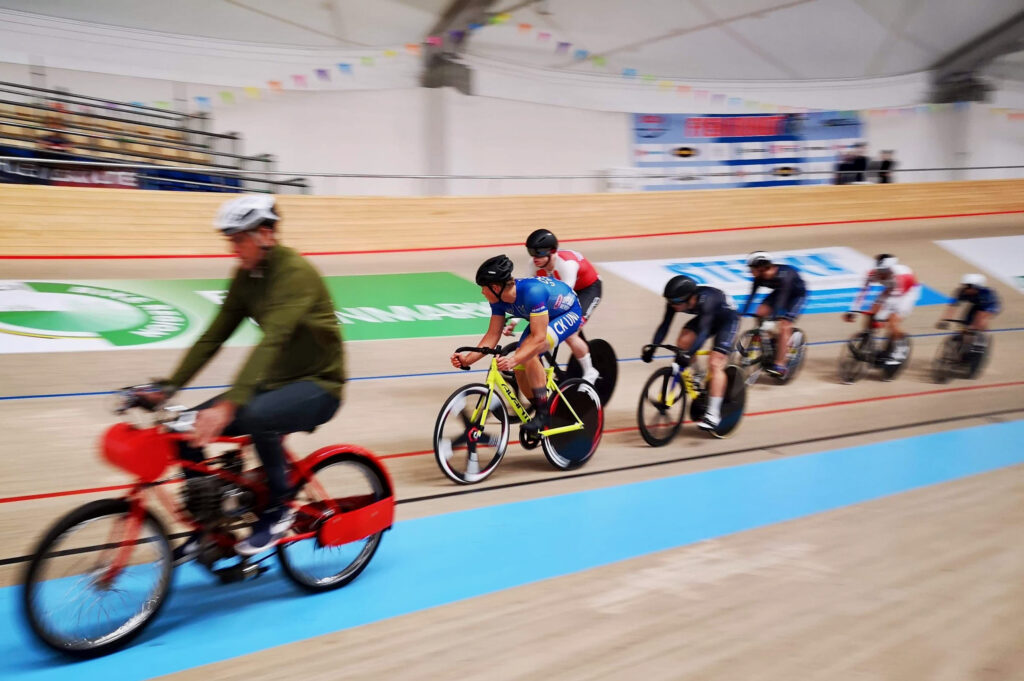
Christoffer Eriksson is the Nordic Champion in Keirin. Keirin is an event similar to the match sprint but features between three and seven riders competing in a sprint race of 3 laps after having followed in the slipstream of a pacing motorbike for 3 laps. The motorbike gradually increases in speed before peeling off and letting the sprinters battle it out. The event is fierce, fast and unpredictable, with many split-second decisions about when to hold and when to attack that have to be made under fatigue.
Christoffer has lower top speed than many of his opponents, but on the flipside he is perceptive and he does not tire easily. In competition he cannot just muscle himself to wins but instead has to see how the match unfolds. He wins by finding the opportunity to get a gap early, or to follow the strongest riders when they do so. Using his strength to not get boxed in, and accelerate to fill gaps is an important quality for him.
One exercise to practice this ability could be to build, then simulate staying on a wheel, relaxing to get some distance in order to use the slipstream to get enough speed to go past on the outside. We could call this exercise “hit, fly, hit”.
In order to build the language for this we should consider the actions involved in it. Most important is the verb that should be the main descriptions of the action to take. I’ve often used the word “push”, as it is pushing the pedal away we would like the athlete to do. But considering that pushing is something that could be done slow I prefer “punch”, which I think would be a perfectly fine option. You can push slowly, but you can’t imagine punching slowly.
Knowing about the very specific encoding of memory storage, I would like to use a word less associated with the upper body. I would propose using “stomp”, which would seem as a similar action as punching, but for the lower body, where power is most important for cycling.
When describing the exercise, I would use something like “Build up to speed and and then stomp as hard as you can to go faster, closing the distance to a breakaway rider. Then stay as smooth and effortless but without losing cadence, and then again stomp hard to accelerate past”.
In order to sharpen the action cue I prefer to shorten it to a minimum. Keep the action, direction and distance, and end up with “stomp fast forward”, and after the “fly part” again tell Christoffer to “stomp hard past”.
The exercise will be tied to race tactics, and we would be able to get a nice feedback loop going in order to improve future exercise according to the needs and skill level of the rider.
The skeptic could point out that the examples given in this series of articles appear to be quite simple. That all I do is to observe my athletes, and when I think I’ve seen what needs to be improved upon, I have them do that very thing. Yes, with some variation, and sure, carefully considering communication and possible improvements of the exercises – it all appears to be so simple.
They would certainly be right. Even though I would argue that doing the simple thing well, is not easy. Let’s also describe how one could use the same methods to develop something less like what is performed in the sport itself.
When an exercise is very specific, by definition it has a low degree of overload. If we would like to lift the middle of a rug from the floor, we would do best to direct most of our lifting to that point exactly. If we want to maximize how high we could get it, we would also benefit from at the same time lifting at the edges.
In elite sports, you rarely win with the distance of a landslide. More often with the small margins visible in the loser’s sigh. The athlete also needs the marginal gains found in general overload.
You have to appreciate the impact that variation and change has on how an athlete reacts to training across the board
Derek Evely
The upper body is involved at a remarkable extent when cycling hard compared to when cycling less hard. The degree of negative relation between upper body asymmetry and maximum cycling power production is quite exceptional.
This should not come as a surprise – in high intensity movement the opposing forces are so great that muscle fibers have to stay close to their optimum length, and as the feet are attached to the pedals, there is less flexibility of positions in the lower body. One can imagine how much this must challenge the trunk and the pelvis when force is applied into the pedals. Studies also indicate that compromised coordinative patterns for the ankle joint correlates with loss of power.
For the cyclist who wishes to win in a sprint this would seem to make an argument for
- Upper body training (Pullups and Dips?)
- Hip strengthening (Hip thrusts seem to be popular)
- Core training (oh, those circuits that burn so good)
- Ankle strengthening (Calf Raises, for more of that sweet burning sensation!).
While there is nothing wrong with these exercises, I would treat such isolation as things we do at the end of the session, after we’ve done everything else.
In movement, force produced by muscles moves through the body. Patterns between muscles occur with the changing demands of force in order to develop synergies. The whole body efficiently forms a unit capable of more force production than any of its muscles in isolation.
Again, with the principle of specificity in mind, there seems to be an argument for multi-joint compound movements in the gym to maximize transferability of increases of strength.
The need for variation is fulfilled already if we make sure that there is a large extent of overload.
“The human race shouldn’t have all its eggs in one basket, or on one planet. Let’s hope we can avoid dropping the basket until we have spread the load.”
Stephen Hawking
In bicycle sprinting you need to subdue very heavy resistance, especially in starts and acceleration. Further, these efforts must not make you so tired that you can continue to turn around those heavy gears the distance required to complete the race. Being strong for the sprinter is very specific.
In some of its disciplines, like in the match sprint and Keirin, a modernization of tactics has raised the need for top speed over acceleration. This has forced the riders into an arms race for the capacity to push bigger and bigger gears.
In earlier posts we have explored the balance between specificity and overload in the gym setting, and isolated the following basic rules
- Keep movement somewhat similar in movement patterns and stimuli
- Overload as much as possible while satisfying rule #1. Large load means larger neural adaptation and higher percentage of muscle fibers being recruited.
- And do not let the main movement mechanics break down or change during the set
I argued for single leg movements for developing maximal leg strength for sports played on one leg (cycling, team sports, track and field, racket sports, etc) and double leg movements for those that have movements performed symmetrically (powerlifting, weightlifting, CrossFit, etc).
Possibly we could tweak this even further.
Before we go on to explore this I’d like to point out that I do not propose to exclude single joint general movement, despite having less obvious benefit. In fact I have all of my athletes do such movements, like pull-ups and dips, but they do it late in the session, after the more contextual work is done.
The way our muscles in the lower body are structured allows for a unique role in the transformation of rotation in the knee joint into the production of high force. Biarticular muscles are muscles that cross two joints rather than just one, such as the hamstrings which cross both the hip and the knee. Rectus Femoris in our quadriceps and gastrocnemius in our calves also have this property.
These bi-articular characteristics allow for extending the joints one by one in a sequence called the proximal-to-distal sequence more commonly referenced as triple extension. Extension of these joints one by one allows at least one of them to have a favorable translation relationship throughout the full extension.
This sequence allows for the possibility of more net force production, but in order to function properly the extensions should be completed in a certain order.
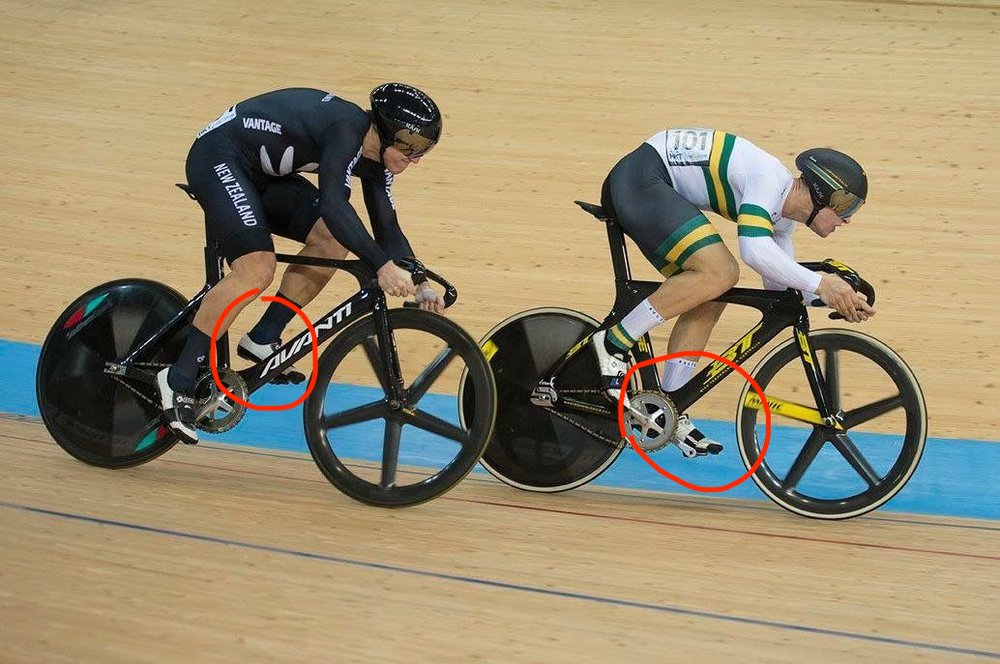
An ankle collapsing during the pedal push does not translate into movement of the pedal, but still cost energy. To prevent this leakage of force efficient cycling pedaling depends upon the ability to keep the ankle locked into position.
If the push downwards is done with a highly extended or flexed ankle the extension movement becomes rapidly less efficient. It would seem that cycling therefore cannot fully use the benefits of the triple extension.
During the sprint, ankle joint power decreases more rapidly than power at other lower limb joints, while hip extensors and knee flexors sustain their power for a longer time at higher rate.
The hip extensors are also the strongest muscle group in all velocities, followed by knee extensors and hip flexors. The weakest muscle group are the ankle flexors.
This seems to further support that there are differences in the efficiency of the pushing sequence with fast cycling, possibly at least partly as a result of not being able to execute the triple extension in the most efficient sequence.
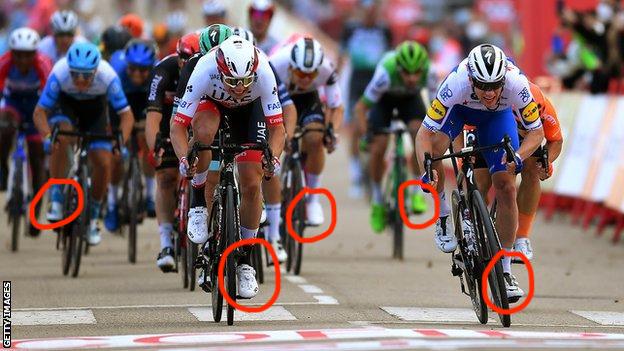
New inventions in technology to measure performance in endurance training changes the way training is conducted and planned. The way things work in the strength world is no different. Traditionally the measurement was the weight on the bar, but lately bar speed, or power, has been popularized as a way to monitor performance.
More contextual always means less optimal for overload, meaning that athletes will always have lower numbers to show for their efforts. The systemized way of using such constructs could potentially bias us to high performance in these constructs, rather than to look for more contextual performance increases.
It will also subconsciously nudge us toward movements with the highest efficiency, regardless if we do not have these options for movement execution on the field. This is often defended with references to higher neural stimuli of these exercises. High effort in more contextual movements will also have equally high neural stimuli, despite lower measurements, as an effect of their lower mechanical efficiency.
Very seldom do we train strength in the gym with our joints in such non-optimal positions. Since muscles do change their optimal length and other properties with exposure, this is the whole point of strength training, and given that the coordination of chains of muscle is no less trainable – maybe we should?
The standing start is no different from seated pedaling. If the knee joint and hip joint creates force by opening up, the ankle must stay fixated in order to translate this force from above into the pedal. If it does not there is a leakage of force.
As we found in an earlier article the split squat is a fine example of an exercise capable of generating a lot of force. Even more so with the added stability of the hands. We can see that the ability to transfer force through the ankle is one limiting factor in the video of the standing start above.
Possibly we could try to combine a dynamic high force output from the hips and the knee joints with a static high force demand of the ankle?
As cadence increases, the time we have to create force shorten.
Disregarding exactly what the optimal pedaling rate for high power sprinting is, it is definitely high enough to not allow for inefficiency. For us to develop efficiency to perform unloaded high intensity movements, we should practice pre-tensioning with the use of co-contracting muscles alone.
This could be done with high power ballistics movements, such as jumps, especially from static positions with the least possible help from pre-loading and counter movements. I see few drawbacks doing some of them from mechanically challenged positions similar to what you would find in bicycling.
The splinter in your eye is the best magnifying-glass.
Theodor W. Adorno
The main reason we still lean so much on these perfect systems of explanation for decision making is that they provide the false safety of the ideal. Numbers are clear and concise, actual situations are messy. But in that mess there is also information that is lost when quantified.
A magnifying glass quantifies and enlarges an image, but the spectator cannot truly construe meaning from what is magnified. Only when we get a “splinter in our eye” we are forced to stop to regard the things that do not fit in. The flaw in vision, becomes a way of seeing better.
To say something about particular situations risks exposing our ignorance. Our challenge then, becomes not to hide from our possible ignorance, but to embrace that risk.
- “Wittgenstein Plays Chess with Duchamp or How Not to Do Philosophy”, https://www.toutfait.com/wittgenstein-plays-chess-with-duchamp-or-how-not-to-do-philosophywittgenstein-on-mistakes-of-surface-and-depth/
- “Language In Coaching: How To Create And Use Terminology”, https://spielverlagerung.com/2020/05/10/language-in-coaching-how-to-create-and-use-terminology/
- “Evidence for cortical encoding specificity in episodic memory”, https://pubmed.ncbi.nlm.nih.gov/12208009/
- “Concurrent training for peak power and endurance”, lecture by Henning Wackerhage, https://www.youtube.com/watch?v=BKy28LSldPc
- “Sprint cycling performance and asymmetry”, https://www.researchgate.net/publication/291186332_Sprint_cycling_performance_and_asymmetry
- “Eccentric cycling does not improve cycling performance in amateur cyclists”, https://www.researchgate.net/publication/330097121_Eccentric_cycling_does_not_improve_cycling_performance_in_amateur_cyclists
- “Comparison of biomechanical data of a sprint cyclist in the velodrome and in the laboratory”, https://www.researchgate.net/publication/347521647_COMPARISON_OF_BIOMECHANICAL_DATA_OF_A_SPRINT_CYCLIST_IN_THE_VELODROME_AND_IN_THE_LABORATORY
- “Derek Evely: Training Variety and Sequencing for Advanced Athletes”, https://just-fly-sports.com/podcast-102-derek-evely/
- “Isokinetic muscle strength and short term cycling power of road cyclists”, https://www.researchgate.net/publication/273216330_Isokinetic_muscle_strength_and_short_term_cycling_power_of_road_cyclists
- “The unique action of bi-articular muscles in complex movements”, https://www.researchgate.net/publication/19658958_The_unique_action_of_bi-articular_muscles_in_complex_movements
- “The influence of lower leg configurations on muscle force variability”, https://www.researchgate.net/publication/323136175_The_influence_of_lower_leg_configurations_on_muscle_force_variability
- “Joint-Specific Power-Pedaling Rate Relationships During Maximal Cycling”, https://www.researchgate.net/publication/260646849_Joint-Specific_Power-Pedaling_Rate_Relationships_During_Maximal_Cycling

